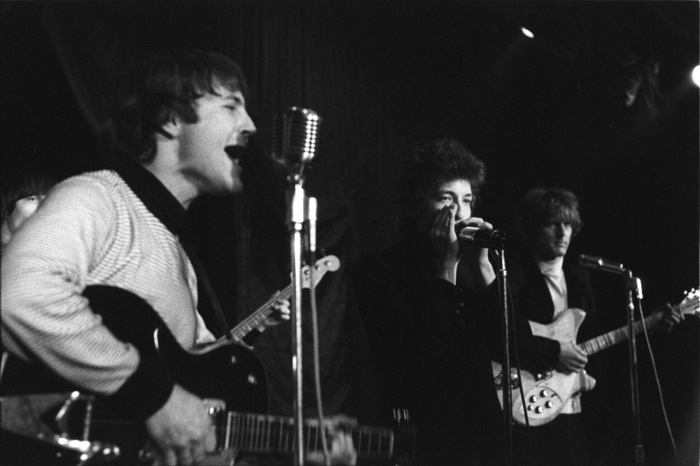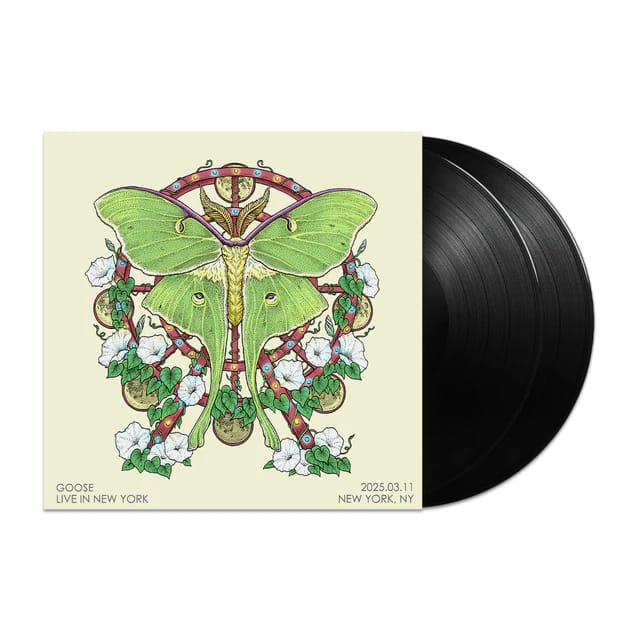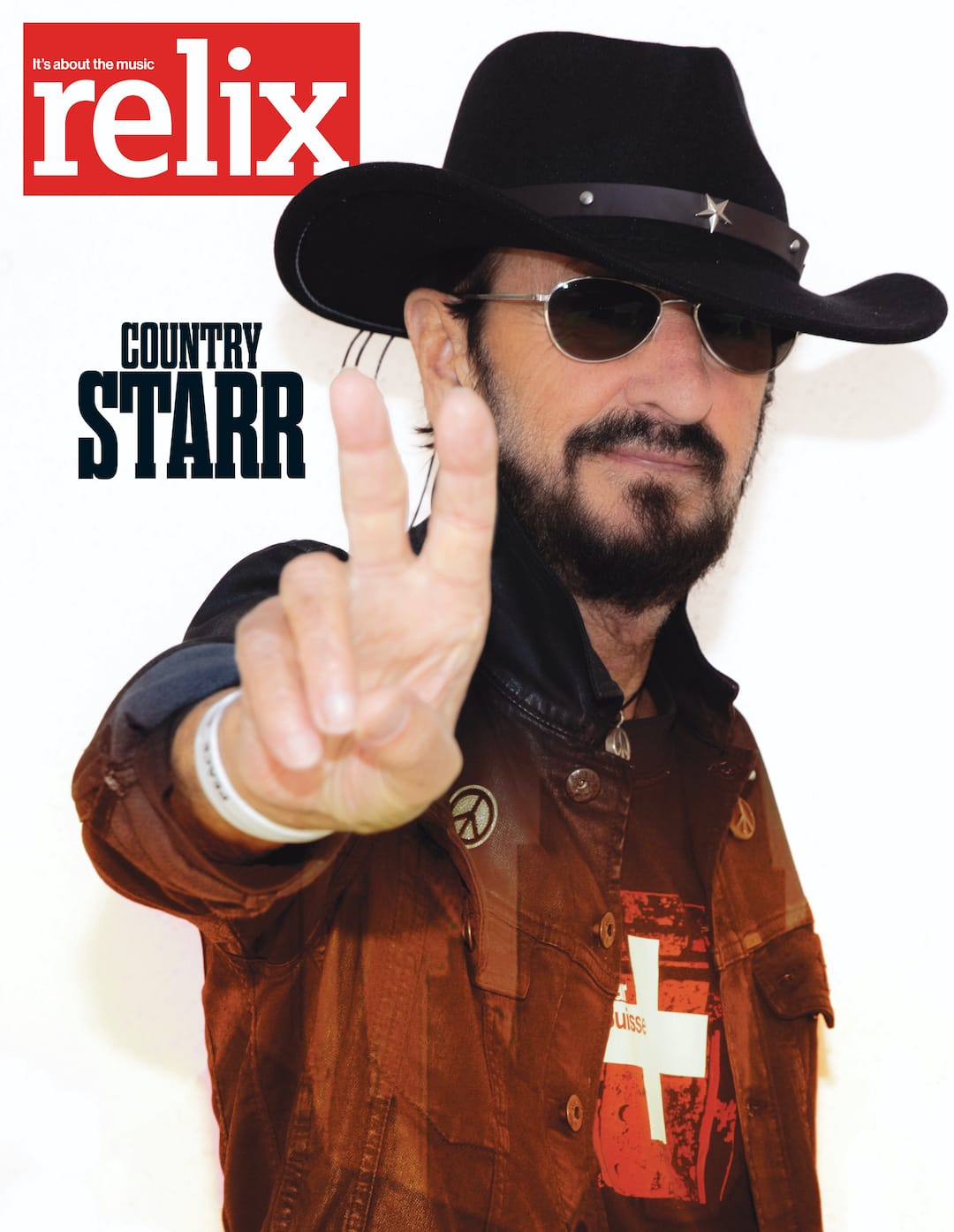Substance and Style: Roger McGuinn on ‘The Byrds 1964-67’

(photo credit: Jim Dickson Archive/Henry Diltz Photography)
***
“It felt like we were experiencing an artistic renaissance,” Roger McGuinn says of the period explored in the new art book, The Byrds: 1964-1967. This work presents over 500 images, many of them previously unreleased, that track the development of the band’s original lineup: McGuinn, David Crosby, Chris Hillman, Gene Clark and Michael Clarke. The Byrds: 1964-1967 also incorporates new interviews with surviving members McGuinn, Crosby and Hillman, whose signatures appear in a Super Deluxe Limited Edition.
The future Rock and Rock Hall of Famers first gained notoriety for their 1965 cover of Bob Dylan’s “Mr. Tambourine Man” and continued to connect with their vocal harmonies and McGuinn’s innovative expressions on his 12-string Rickenbacker guitar.
However, the band’s aspirations were always much deeper. As McGuinn reveals, “When we first came out, they labeled us as folk-rock but we said, ‘We don’t want to get stuck in a label.’ So we experimented with country, jazz, electronic music and whatever else. We tried to stretch the parameters.”
You grew up in Chicago, then moved to Manhattan and established yourself in folk circles. What led you out to Los Angeles where you formed The Byrds?
I was raised in Chicago and went to the Old Town School of Folk Music. Then, I toured with some bands before I ended up in New York after a couple of years. I became a studio musician and played with Paul Simon on the “Sound of Silence” demo, for instance.
I also hung out in the Village, and I worked for Bobby Darin’s publishing company in the Brill Building, where I wrote some songs. Bobby was quite talented. He was able to do different genres. He could do rock-and[1]roll and folk music and the Frank Sinatra kind of stuff. He played piano, guitar and drums and he could tap dance like Sammy Davis Jr. In fact, they were friends. He was a really gifted guy.
I enjoyed working with him and he was kind of a mentor to me. I used to follow him around and ask him questions about the music business and how to make it. He said, “Rock-and-roll, rock[1]and-roll.” This is when I was still into folk music, so he was an inspiration to get into folk and rock.
That’s when I discovered The Beatles. They were using folk-music chords in their rock[1]and-roll. They had been a skiffle group called The Quarrymen, and skiffle is kind of a folk[1]music style. They had all these passing chords, instead of just going with three chords and an attitude like rock-and-roll normally was. So that attracted my attention and gave me the idea of doing some kind of folk music with rock-and-roll and combining the two.
I took it to the Village and played it for the people in the coffee houses. They didn’t like it, but the guy who ran the coffee house loved it. He said, “Put a sign outside that says ‘Beatles Impersonations.’” I thought, “This is embarrassing.” So I bought myself a one-way ticket to LA and got a job at the Troubadour. That’s where I ran into Gene Clark and David Crosby. We formed The Byrds after that.
I had that idea of taking folk songs and souping them up with a Beatles beat, which is what happened with “Mr. Tambourine Man.” It just kicked it up another notch.
You did an early interview in the U.K., where you referred to the music of The Byrds as an electronic magazine, a description that still resonates in 2022.
Well, that was my idea, although it wasn’t entirely original. There had been some TV shows that called themselves electronic magazines. So that’s where I got the idea.
We had a potpourri of different styles and different songs. It was kind of like a magazine, where you have a variety of articles and things about different people and places.
I always liked to put a humorous thing at the end of a Byrds record, like “We’ll Meet Again” [from Mr. Tambourine Man], which was a tribute to Stanley Kubrick. It was in the end of Dr. Strangelove, a movie that I loved, so I was trying to reach out to him.
In a number of the photos that appear in the book, you’re holding a camera. Is that a medium you actively explored at the time?
I had a still camera, but what really interested me was my a Bolex RX 16mm movie camera. I took some video footage, some of which was used in the movie Echo in the Canyon.
I had the movie camera and the idea was that we were going to shoot some video and project it behind ourselves onstage and have kind of a psychedelic light show going on.
I was a fan of Bruce Connor, who did some avant-garde video stuff with single frame video. He did one with the music of Ray Charles in 1961 [Cosmic Ray]. So if you look at my “Eight Miles High” video—I think you can find it somewhere on YouTube— it’s got a lot of that single frame stuff, but it’s very jazzy. It has a few frames, then it goes to full motion and then it goes back to a couple of frames. I was experimenting with that.
I’ve heard that Dylan couldn’t really imagine “Mr. Tambourine Man” being played as a rock song until he heard you guys doing it. Did he ever share that sentiment with you?
He’s always been kind of quiet about that, but I do remember when Bob and Bobby Neuwirth came to World Pacific studios, where we were rehearsing some of his songs. He said, “Wow, you can dance to it.” He was impressed by that.
Then, I played another one of his songs. [McGuinnn picks up a guitar and performs the first few lines from “All I Really Want to Do.”] He said, “What was that?” And I said, “That’s one of your songs, man.”
Beyond covers, The Byrds quickly became known for your signature originals. A number of these songs actively remain in the public consciousness, like “So You Wanna Be a Rock and Roll Star,” which you point out was not a dig at The Monkees.
I was at Chris Hillman’s house and we were going through a teen magazine with different one-hit wonders and we said, “That’s kind of funny. Let’s write a song about that—how to be a rock-and-roll star.” It wasn’t specifically about The Monkees because I was friends with Mike Nesmith and Peter Tork.
I love the way that Tom Petty did our stuff. I think he probably did it better than The Byrds and it was great to have Patti Smith do “Rock ‘N’ Roll Star” as well as some other people. Then, to have “Turn! Turn! Turn! in Forrest Gump, that was great.
You’re right, things do keep coming around. It’s an honor. It makes you feel good. It makes you feel like you’ve done something that does endure. I think that the reason that what we did endures is that it wasn’t bubblegum. Jim Dickson made an effort to say, “Do something permanent. Don’t do something that’s going to evaporate.”
***

That was when we first got together. I was still wearing glasses and Crosby and I both had Martin 12-string acoustic guitars. Mine’s kind of slung over my back and his is up in the frame. We’re just talking and planning out what we we’re going to do, in terms of combining folk and rock. Of course, we kept trying to change. We didn’t want to get locked in a box, so that’s why we kept moving from one genre to another. It was just fun for us. It was more interesting to do that than to be just folk-rock the whole time.

(Photo credit: Helie Robertson)
That looks like it was at Mount Tamalpais near San Francisco. We were playing an outdoor gig, where the Hell’s Angels rode us up the hill on their bikes. I remember putting the guitar over my shoulder and getting on the back of a Hell’s Angel bike to get up to there. I don’t remember much more about it except that Hugh Masekela played with us onstage. Crosby and I were jazz fans. The other guys, not so much, but Crosby knew Hugh Masekela and I had toured with Miriam Makeba, who was his wife. Our manager also managed Hugh Masekela, Peter Fonda and a couple of other people. So we were on common ground there, but I was a big jazz fan and it was a thrill to have Hugh Masekela with us. He was playing on “So You Want to Be a Rock ‘N’ Roll Star.”

(Photo credit: ); Barry Feinstein /© Barry Feinstein Photography, Inc)
That’s on Sixth Avenue in New York. This is from when we flew in to appear on Hullabaloo for our first nation television appearance [in May 1965]. Even though David and I had both lived in New York, we weren’t dressed for the weather. I remember that most of the time we were cold because it was in the ‘40s and we were dressed for California.

(photo credit: Jim Dickson Archive/Henry Diltz Photography)
Jim Dickson and Dylan knew each other. Jim was our first manager and I would imagine he invited Dylan to Ciro’s [on Sunset Boulevard in Los Angeles] to get up there and play harmonica with us. Dylan was not known as a rock star at that point. He was a folk musician and doing fairly well. He’d had hits with Peter, Paul & Mary and so on—not his own hits but his songs. He was playing in theaters and performing arts centers. He was doing pretty well as a folk singer, but I think he saw the potential in The Byrds and he was nice enough to join us onstage. [This image was captured on March 26, 1965, shortly before the release of the “Mr. Tambourine Man” single.]

(photo credit: Jim Dickson Archive/Henry Diltz Photography)
Those glasses were something that we made popular. It was kind of silly but fun. What originally happened was I was walking down MacDougal Street, and John Sebastian was coming up north. He had these little cobalt blue sunglasses on and I said, “Wow, cool shades, man.”
They were antique sunglasses that one of the guys in Jim Kweskin’s jug band had given to him, and he said, “Yeah, put ‘em on and look up at the street light and move your head around. It’s really groovy.” I remembered that. So when I got out to LA, I got some wire frames and I had some prescription lenses put in. I’ve always worn glasses. So I had cobalt blue prescription lenses put into the wire frames. Eventually, because of The Byrds’ albums, you could walk into a drug store and find a card with maybe 20 pairs of little blue glasses on it for a buck apiece. It was a definite commercial thing. We tried to capitalize on that, but we were a little bit too late, so we couldn’t get into it.




















